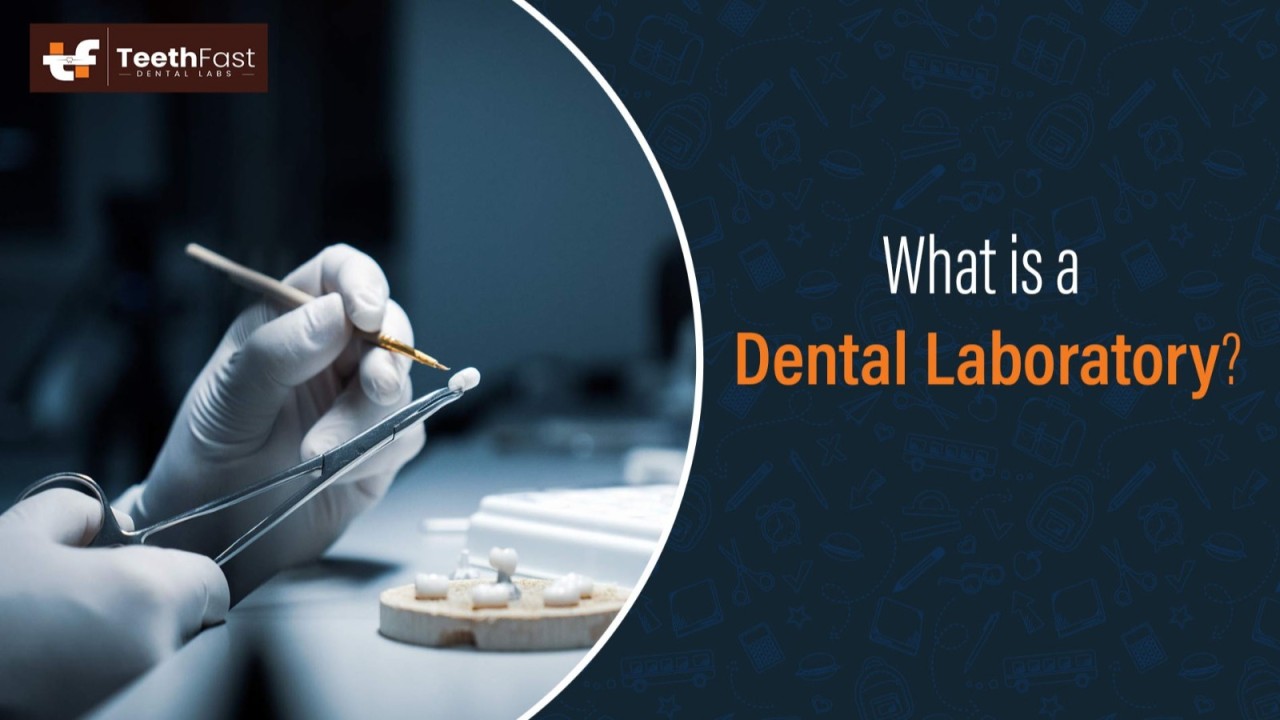Zirconia Crowns vs. DMLS Crowns: A Comprehensive Comparison
When it comes to dental restorations, crowns play a crucial role in both functionality and aesthetics. Two popular options for crowns are zirconia and Direct Metal Laser Sintering (DMLS) crowns. Each type has its own set of advantages and considerations. In this blog, we’ll delve into the differences between zirconia crowns and DMLS crowns, exploring their materials, manufacturing processes, benefits, drawbacks, and best use cases.
Understanding Zirconia Crowns
What is Zirconia?
Zirconia, or zirconium dioxide, is a ceramic material that has gained popularity in dentistry for its strength and aesthetic qualities. It's a white, crystalline oxide of zirconium, and in its dental form, it’s often used as a core material beneath porcelain veneers or as a full crown.
Manufacturing Process:
Zirconia crowns, including TeethFast All Ceramic Crowns and TeethFast Zirconia Crowns with Layering, are typically created using a process called Computer-Aided Design and Computer-Aided Manufacturing (CAD/CAM). The process involves:
- Impression: A digital or physical impression of the tooth is made.
- Design: The digital impression is used to design the crown using CAD software.
- Milling: The crown is milled from a block of zirconia in a dental milling machine.
- Sintering: The milled crown is then heated in a kiln to its final, dense form.
Advantages of Zirconia Crowns:
- Strength and Durability: Zirconia is incredibly strong and durable, making it a good choice for both anterior and posterior teeth.
- Aesthetic Appeal: Zirconia crowns can be highly esthetic, especially when layered with porcelain.
- Biocompatibility: Zirconia is biocompatible, meaning it’s less likely to cause allergic reactions or other adverse effects.
- Stain Resistance: Zirconia is resistant to stains and discoloration over time.
Drawbacks of Zirconia Crowns:
- Opacity: Zirconia can be more opaque than natural tooth enamel, which can sometimes impact the esthetics of anterior restorations.
- Wear on Opposing Teeth: Zirconia crowns can be abrasive to opposing teeth if not properly glazed or polished.
Understanding DMLS Crowns
What is DMLS?
Direct Metal Laser Sintering (DMLS) is an additive manufacturing technique used to create metal dental crowns. It involves using a laser to sinter powdered metal into a solid structure. DMLS crowns are often made from materials like titanium or cobalt-chrome alloys.
Manufacturing Process:
TeethFast DMLS PFM (Porcelain-Fused-to-Metal) crowns are created using the DMLS process, which generally includes:
- Digital Impression: A digital impression of the tooth is taken.
- Design: The crown is designed using CAD software.
- Printing: The design is sent to a DMLS printer, which uses a laser to fuse powdered metal into the crown shape layer by layer.
- Post-Processing: The printed crown is cleaned and sometimes further treated to achieve the desired finish.
Advantages of DMLS Crowns:
- High Strength: DMLS crowns, especially those made from titanium or cobalt-chrome, are known for their exceptional strength and durability.
- Precision: The additive manufacturing process allows for high precision and customization, ensuring a perfect fit.
- Biocompatibility: Metals used in DMLS are generally biocompatible and well-tolerated by the body.
- Less Material Waste: The additive process is efficient, with minimal material waste compared to subtractive methods.
Drawbacks of DMLS Crowns:
- Aesthetic Limitations: DMLS crowns, while strong, often lack the translucency of ceramic crowns and may be less esthetic, especially for anterior teeth.
- Complexity in Adjustments: Adjustments to DMLS crowns can be more complex due to the hardness of the material.
Comparative Analysis
- Strength and Durability:
- Zirconia Crowns: Known for their high strength, zirconia crowns are suitable for both anterior and posterior restorations. However, they can be abrasive to opposing teeth.
- DMLS Crowns: Typically stronger than zirconia, particularly in cases where titanium or cobalt-chrome alloys are used. They are especially useful for areas requiring high durability.
- Aesthetic Considerations:
- Zirconia Crowns: Offer good aesthetics, especially when layered with porcelain. However, their opacity might be a concern for anterior teeth.
- DMLS Crowns: Generally less esthetic due to the metal’s opacity and lack of translucency, making them better suited for posterior teeth or where aesthetics are less critical.
- Manufacturing and Customization:
- Zirconia Crowns: The CAD/CAM process allows for precise and customizable crowns with a generally straightforward manufacturing process.
- DMLS Crowns: Offer high precision and customization with advanced additive manufacturing techniques, though adjustments can be challenging.
- Biocompatibility and Wear:
- Zirconia Crowns: Biocompatible and stain-resistant, but they can wear on opposing teeth if not properly managed.
- DMLS Crowns: Biocompatible with minimal material waste, though they may be harder on opposing teeth and less esthetic.
Best Use Cases
- Zirconia Crowns: Ideal for patients who need strong, durable, and aesthetically pleasing crowns. They are a good choice for both anterior and posterior teeth, especially where esthetics are a concern.
- DMLS Crowns: Best suited for cases requiring high strength and precision, particularly in posterior teeth where esthetics are less critical. They are also beneficial in situations where traditional methods may not provide the required durability.
Conclusion
Both zirconia and DMLS crowns offer distinct advantages and are suited to different clinical situations. Zirconia crowns excel in strength and aesthetics, making them a versatile choice for a variety of dental restorations. On the other hand, DMLS crowns provide unparalleled precision and durability, making them ideal for high-stress areas where strength is paramount.
Choosing between zirconia and DMLS crowns will depend on factors such as the location of the restoration, the patient’s esthetic preferences, and the specific clinical requirements.






